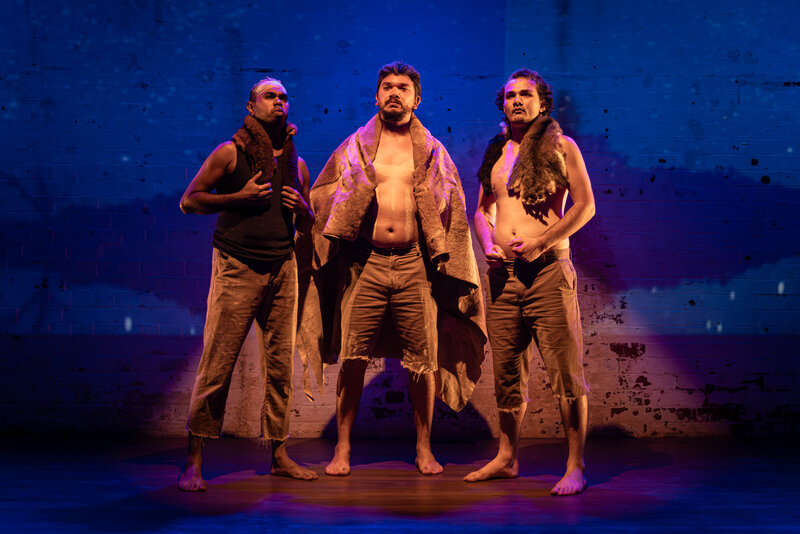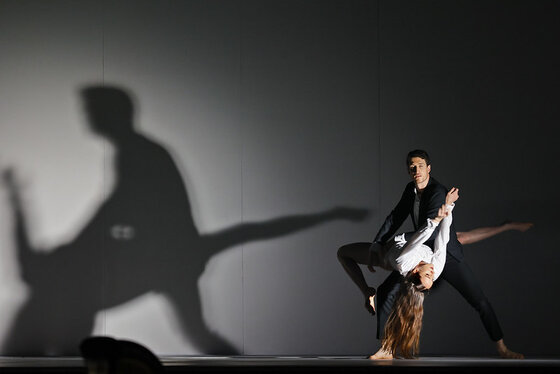“A lot of people ask me if I’m happy with the turnout. I think it’s more than being happy, being satisfied, as no creative person is entirely satisfied with their creation,” reflects Indian born film director Anupam Sharma when talking about his debut feature UnIndian, which was shot in Sydney.
UnIndian is a multi-cultural romance which follows the rocky path of of the romance between Will (played by former cricketer Brett Lee in his film debut), who teaches Aussie vernacular to migrant students, and Meera (played by Indian actress Tanithshtha Cahtterjee), a single mother living in Sydney and raising her young daughter. However, Meera’s family would prefer her to marry an Indian, and preferably a doctor. Falling in love with an Australian is not only scandalous – it’s unindian.
 UnIndian explores issues such as cultural beliefs, tradition, prejudice. The idea itself came from writer Thushy Sathi, a second-generation Australian Sri Lankan of Tamil background. He brought the film to Sharma a few years ago. “What I loved in the film was a beating heart of an Australian of Indian origin who is non traditional second generation Australian,” Sharma recalls. “She’s a single woman whose got a kid and lo and behold she falls in love with a blonde, blue eyed Aussie. As an Indian I could take certain liberties without being accused of racism or political correctness. So I took that idea to push it further, to not only deal with Aussie communities but also to deal with Indians in Australia, whether it’s their infatuation with fair colours or doctors. We had a lot of fun doing it because I think that tongue-in-cheek and good humour are a good way to tackle a lot of issues.”
UnIndian explores issues such as cultural beliefs, tradition, prejudice. The idea itself came from writer Thushy Sathi, a second-generation Australian Sri Lankan of Tamil background. He brought the film to Sharma a few years ago. “What I loved in the film was a beating heart of an Australian of Indian origin who is non traditional second generation Australian,” Sharma recalls. “She’s a single woman whose got a kid and lo and behold she falls in love with a blonde, blue eyed Aussie. As an Indian I could take certain liberties without being accused of racism or political correctness. So I took that idea to push it further, to not only deal with Aussie communities but also to deal with Indians in Australia, whether it’s their infatuation with fair colours or doctors. We had a lot of fun doing it because I think that tongue-in-cheek and good humour are a good way to tackle a lot of issues.”
Sharma says that when he first read the script he immediately thought of Brett Lee for the role of Will. Even though he was not a cricket fan (which he jokingly says “is very unIndian of me”) he had known Lee profesionally for ten or twelve years, and had shot several tv commercials with him. “We refined the script and we sent it to him and he loved it as well. We did some more fine tuning after he said yes. We did some improvisations with him, we did some workshops with him. The only major change we did was previously Will was supposed to be a paparazzi photographer. But looking at Brett we said no he wouldn’t be doing that, so we turned him into someone who helps new students learn Aussie English.
“I don’t think you can coach anyone for a performance,” Sharma continues when talking about the process of helping Lee prepare for and deliver his first big screen acting performance. “I knew there was a performer inside of him. But this was my first film as a director and it’s his first film as a lead actor and both of us did not want to have egg on our face. So we got some heavy hitters from NIDA – Bill Pepper and Kevin Jackson – and we got them in, not to teach him acting but to tell us if we had taken the right decision. They spent a day or two with us and then said: ‘You’re on a winner.’ He just lights up the screen.
“Then we set up some really nice actors around him, actors who are not only professional but actors who are generous in terms of giving and working with him. And then we had some exercises, a lot of workshops, a lot of script reading. And I think Brett brought with him the professionalism and the discipline and the team spirit from the cricket world, which was very refreshing in our film set.”
Tanishtha is a major actress and in the last four weeks she has had five films in four major film festivals. But she is more well known outside of India than inside India because she is not a Bollywood actress, she’s an Indian actress. When the script was sent out to India it went to a couple of Bollywood actresses who Sharma doesn’t want to name. Every major actress was salivating over the role, and why not says the director. He describes it as “an international film, it’s a woman oriented film, the character is quite meaty, she not a token female character. And you get to work opposite Brett Lee.
 “I went to Tanishtha for the simple reason that she’s down to earth,” Sharma continues, “she’s a good human being, and she would have been the right fit match with the right amount of generosity to work with someone like Brett and me and our writer who is a first time writer. Our crew was a superstellar crew, from the Australian icons of actor John Howard to Academy Award nominated editor Marcus Darcy, and cinematographer Martin McGrath who shot Muriel’s Wedding.”
“I went to Tanishtha for the simple reason that she’s down to earth,” Sharma continues, “she’s a good human being, and she would have been the right fit match with the right amount of generosity to work with someone like Brett and me and our writer who is a first time writer. Our crew was a superstellar crew, from the Australian icons of actor John Howard to Academy Award nominated editor Marcus Darcy, and cinematographer Martin McGrath who shot Muriel’s Wedding.”
Playing Meena’s daughter is newcomer Maya Sathi, who is actually the writer’s daughter. Sharma says that he first thought of her for the role three years ago. Both of her parents are business executives and they were not sure if they wanted to let their daughter go into the film industry. When they were about to start shooting he looked at her again and she had grown taller. He did some auditions with Brett and Tanishtha to see if they looked good as a family. “I did not tell Brett or Tanishtha that she was the writer’s daughter,” he adds. “The moment she went with them I left them alone for a few minutes observing them from outside and you could just see them as a family. And what she has done, the amazing amount of life she has brought to the character of Smitha is there for everyone to see on screen.”
The film was shot by Martin McGrath, who Sharma says is one the most calming, gentle intellectual persons he knows. Sharma is also a big fan of Muriel’s Wedding, which he loves in terms of the colours and the vibrancy. “I was over the moon,” he recalls. “We worked well together. As you know the film has got a lot of layers so he said visually we should also have layers. We have a lot of aerial shoots. Martin has done a lot of Bollywood films in Australia as Australian line producer. I always had that remark from Australian friends: ‘How come the way Sydney is captured by overseas film crews we never capture it?’ So we tried to do the same, we tried to capture Australian icons in a sophisticated, glamourous way, not the grungy kind real low end way.”
Sharma shot the film on locations such as the University of Sydney, which is his former alma mater, through some tie-in deals. “For this film we were having all sorts of offers from Indian restaurants offering us $250,000 just to include them in our film, and I said no, because I don’t want to cheapen the film. We went to the university of NSW, and they said they would love to be part of the film, and so not only did we get the locations for free but they paid us money to include them. The same thing happened with SBS, the same thing happened with Destination New South Wales, and Cochlear. We had these strategic partners which helped us with the budget. More improtantly they are now helping us with the marketing of the film.”
Sharma migrated to Australia after completing his year 12 studies in India. He had often visited Tasmania as a kid and had fallen in love with Australia. “I always wanted to make films,” he elaborates. “My grandparents moved to Australia ages ago. When I finished my year 12 in India I couldn’t afford to go anywhere as an overseas student so I straight away migrated to Australia with my parents because this was a country I used to come to as a kid and I fell in love with it. Unlike many Indians and many people who go into Bollywood, I never romaticised with the idea of sleeping hungry and running away from home to be in the film industry. I wanted to do it properly. I did my Bachelors, specialising as a director; I did my Masters specialising as a director.
“We all know it’s hard to sustain yourself as a director in the Australian film industry so I tried to combine my Indian heritage with my Australianness, and started to service Bollywood crews. I’ve done about 200 of them now, for film festivals and music videos and all kinds of things and I’ve done tv commercials.
“I’ve been inspired a lot by my lecturers, I’ve been inspired by a lot of South American and Danish directors, Tarantino – like every filmmaker has been he’s always inspired me. But rather than one particular person I get inspired by certain treatments and certain aspects of a film. I’m hugely inspired by the art film movement in India and I’m always inspired by the licences and creative licences that some of the Bollywood filmmakers take through song and dance and through colour and music, and you can see touches of that all the way through UnIndian.”
 “What prepared me for directing my first feature film was five years at university,” he continues. “When I got this script and I said I wanted to direct it I was approaching it more like a hungry person who knew all about it than like a person who was learning about it on the job. It was just divine, it was something I had specialised in, it was something I had always wanted to do. The only difference was that I managed to do it on a dream project with thanks to our investors who gave me everything I wanted as a director, from a top end crew to top end budget to the best cast.
“What prepared me for directing my first feature film was five years at university,” he continues. “When I got this script and I said I wanted to direct it I was approaching it more like a hungry person who knew all about it than like a person who was learning about it on the job. It was just divine, it was something I had specialised in, it was something I had always wanted to do. The only difference was that I managed to do it on a dream project with thanks to our investors who gave me everything I wanted as a director, from a top end crew to top end budget to the best cast.
“I’ve always said that Australia is one of the most professional film crew countries in the world, and India is one of the most prolific,” Sharma continues. “And the marriage between the two is a win win. As an Indian I love it because I get to work with some of the people I grew up on, huge stars. As an Australian I’m loving it even better because here we are in a struggling Australian film industry, we are foreign filmmakers investing millions of dollars every year into our economy, hiring all of our crew out, our infrastructure, without a single strain on tax payer dollars. So it’s a win-win for both.”
India produces some 800-900 films a year, and has 25 million people sitting in theatres every day, with over 1.2billion in ticket admissions. “But while the numbers are high the quality is not that high, but it has been growing in the last few years,” he says candidly. “The Indian film industry gets 80-90% of its gross revenues domestically and the rest is from the Indian diaspora around the world. It’s the only form of escape in India in the absence of pubs and bands and good tv programming. Everything revolves around Bollywood. So it’s an amazing wide reaching industry.”
Sharma says that the first cut of the film ran at a mammoth 2 hours and 37 minutes. he wanted to make a film that was going to go into festivals and have the critics going gaga over it. But his producer looked at it and said: “I know you want to send it to festivals and that but I see a nice, funny, light frothy popcorn style of film and you would be stupid to let that go for the sake of your ego and make a deep dark festival film.” Sharma took his advice reedited the film/ But even after all the comedy he still thought that it needed a song and dance sequence at the end just like Slumdog Millionaire or Muriel’s Wedding. The song and dance sequence that plays over the end credits was shot towards the end, as a pick up shot.
Sharma hopes that having a popular figure like Lee in the film will help sell it in India as well. “I hope it does for our investors’ sake,” he says. “This is not just the story you see on the screen but the story behind the screen, which is making people go to Australian films, getting private investment in Australian film industry, and diversity on screen. For that Brett is crucial to get people’s interest in the film. I wish every Australian film had such an interest. We would have a lovely film industry here.
“All of us on team Unindian are proud of making this film, proud of pioneering something new in the Australian film industry, we are proud of creating this milestone in the Australian film industry and we hope that we trigger off many more such diverse multicultural Australian projects which can only be good for the robustnes and viability of the Australian film industry.
“I hope that Australian audiences will take away an experience of an Australian life in 2015,” Sharma concludes. “They will take away the inside information into how and Indian Australian family lives, probably next door to them, it will tell them that Australian stories are changing, it will show them on screen what they see on the streets every day, different accents, different faces, different colours, diiferent sights, different sounds, but most importantly it will send them home with a smile on their face.”
Greg King

David Edwards is the former editor of The Blurb and a contributor on film and television




